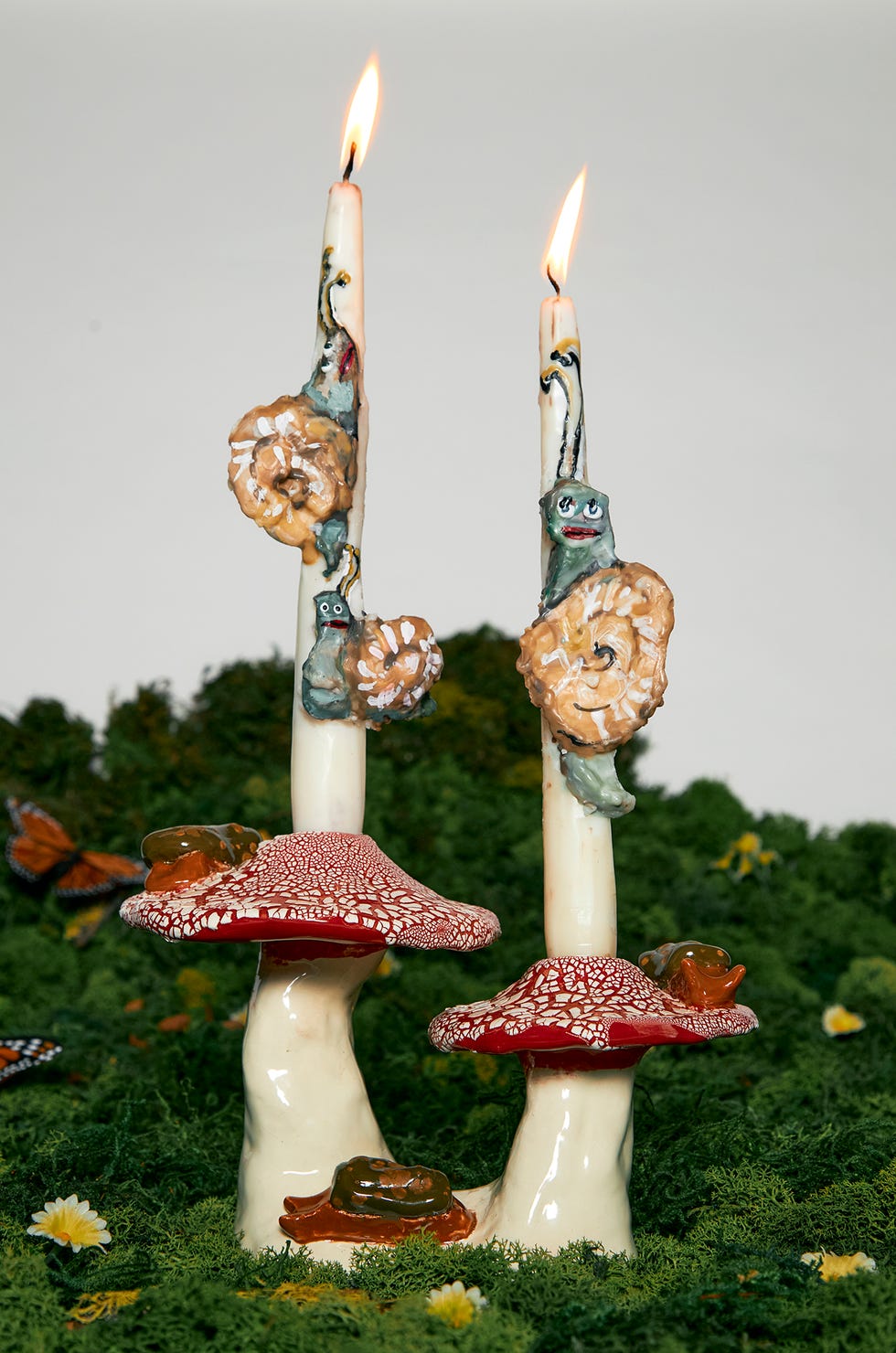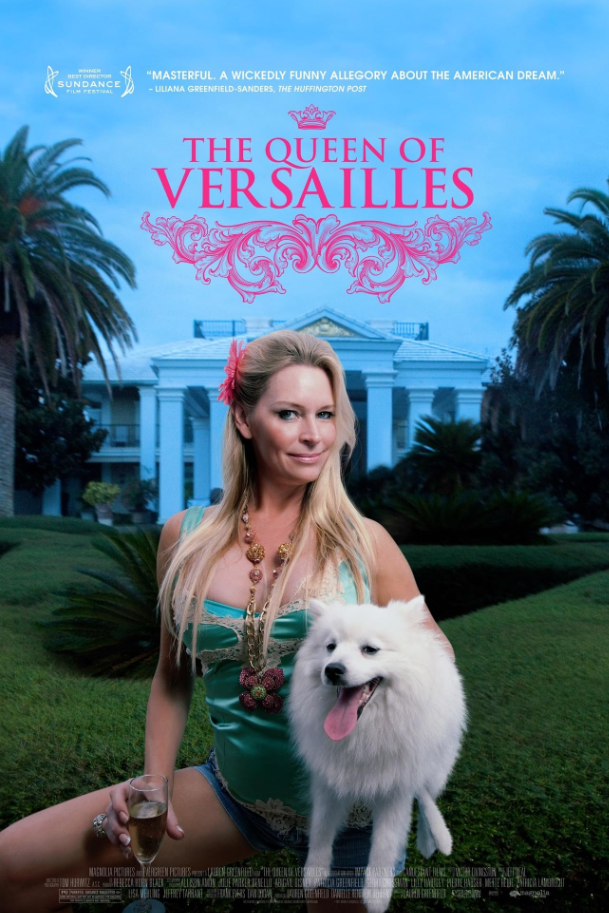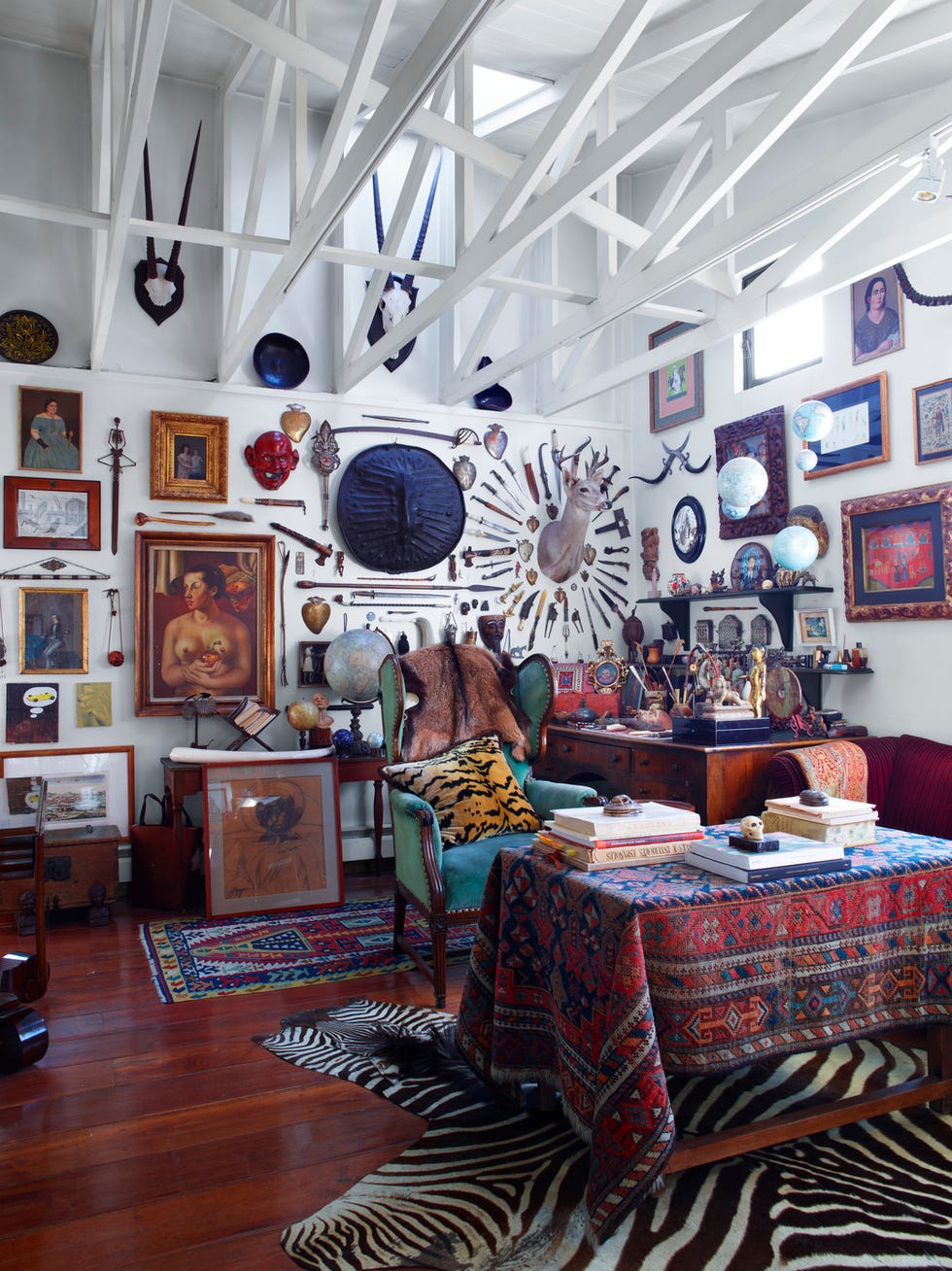For American-born, London-based visual artist Janie Korn, taper candlemaking began in 2018 just for herself as an intimate invocation—she crafted hand-dipped wax forms shaped around abstract ideas like love or abundance. Over time, these sculptural offerings evolved into something more specific, and far more surreal. “They’re not just objects to burn,” she says, “but characters, symbols, or little time capsules.”
For Korn, the taper’s allure lies less in precision and more in the individuality of each piece. “I want the end result to feel a little offbeat and a little alive,” she explains. Her hand-dipped candles embrace irregularities, celebrating forms that defy the uniformity of mass production. Recent creations include a lineup of hand-painted runway-inspired tapers—models dressed in looks from Miu Miu, Gucci, and Louis Vuitton—and a series of iconic works from the collection of the Brooklyn Museum including a bust of Andy Warhol and a Tiffany dragonfly lamp. Launched in 2020, the collection sold out within days.
Tall, slender, and ever-so-slightly dramatic, the taper candle has long been a fixture of churches, homes, and lavish tablescapes—even before Diptyque gave it a designer pedestal. According to the National Candle Association, its origins date back to around 3,000 B.C., when ancient Egyptians dipped reeds in animal fat to light the night. By the 13th century, candlemaking had become a guild craft in England and France, before undergoing scientific advances in the 19th century, like the development of stearin wax and paraffin wax, which both burn more cleanly, the NCA details. The general aesthetic of the taper candle, however, has hardly changed—until now.
Driven by a growing appetite for artisanal objects and sensory-rich spaces, tapers have taken on new forms: twisty, squiggly, blobby, chrome-flecked, food-shaped, ombré-hued, even impossibly-toothpick-thin. Some teeter toward asymmetry; others drip like molten sculpture, if they’re ever lit at all. No longer a supporting act, these wax creations are tabletop stars. And arranging a cluster of semi-ironic tapers on your mantel is a clear wink to those in the design know.
Korn is among a growing cadre of designers elevating the humble taper to an art form. Each artist is pushing wax to its expressive edge—sculpting it, coloring it, breaking it, fixing it—and in doing so, reimagining what a candle can be. There’s Brooklyn-based duo Mark Talbot and Youngjin Yoon of Talbot & Yoon, whose delightfully strange Goober Candles were born from an unlikely source: a 1930s animation test given to Disney illustrators. The task? Make a faceless sack of flour convey emotion using only posture. “Grumpy, forlorn, elated—we were fascinated by how much feeling could be communicated through simple form,” says Talbot. Using clay and plaster, the pair translated those gestures into wax, crafting bulbous figures that look less like candles and more like moody little sculptures. “We love that inanimate objects can feel alive,” he adds. One customer perhaps said it best: “They look like I feel when I want to light a candle.”
The Goobers launched in 2019 with a steady fanbase, but demand exploded during the early days of the pandemic. “We’re not sure if it was the shapes, the colors, the fact that they’re candles—or some mix of all three,” Talbot says. “But we certainly experienced first hand that the general mood in the country had and continues to have an effect on the success of products that bring people personal comfort.”
Texas-based candlemaker Cai Cai, meanwhile, repairs hairline wax cracks with gold leaf, a nod to the Japanese art of Kintsugi. Her creations play by the rules of geometry, with exacting hexagonal shapes and balanced color palettes.
For these artisans, a candle’s ephemeral nature is precisely what makes it so captivating. Unlike static decor objects, it shifts form with every drip. In an age that often prizes permanence and collectibility, the taper candle offers something more poetic—a reminder that beauty can be provisional. “I’ve always been intrigued by temporary art that can change over time or fully disappear,” Korn explains. “The focus with the tapers is to deliver a beautiful, succinct, bold—if not fleeting—surprise in an unexpected place.” For Cai Cai, the ritual of watching a candle gradually diminish “feels like a conversation with time itself,” she reflects.
As inventive as they are, most of these sculptural candles still owe their elegance to centuries-old techniques. The traditional taper is made by hand-dipping a wick—usually cotton—into melted wax again and again, letting each layer cool before the next dip. When sculpting more complex shapes, the process can involve weeks of testing to perfect form and function.
What unites these artists, beyond their fascination with wax, is a deep respect for craft and material integrity. Clean-burning ingredients like soy, beeswax, and coconut wax are favored for their low toxicity and gentle aroma. Wicks are typically unbleached cotton or wood, free from metal cores. And when fragrance is added, it’s often through essential oils or phthalate-free blends that add subtle scent and sometimes a wash of color.
Despite their collectible appeal, these candles are meant to melt, to flicker, to live out their lives in your space. And maybe that’s the whole point. In a world of forever-objects and manufactured sameness, the taper candle offers something refreshingly fleeting: a moment, a mood, a bit of sculpted wax that changes with every hour.
“Candles should be burned—and I want mine to be,” says Korn.
Rachel Silva is the associate digital editor at ELLE DECOR, where she covers all things design, architecture, and lifestyle. She also oversees the publication’s feature article coverage, and is, at any moment, knee-deep in an investigation on everything from the best spa gifts to the best faux florals on the internet right now. She has more than 16 years of experience in editorial, working as a photo assignment editor at Time and acting as the president of Women in Media in NYC. She went to Columbia Journalism School, and her work has been nominated for awards from ASME, the Society of Publication Designers, and World Press Photo.






